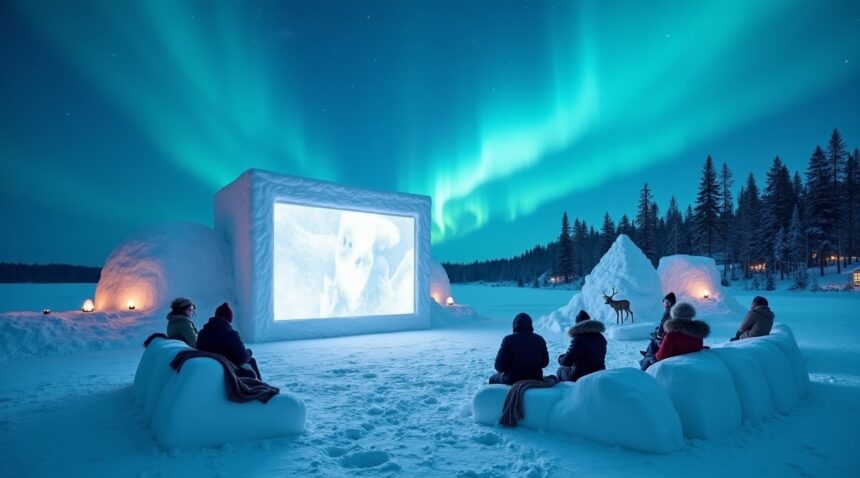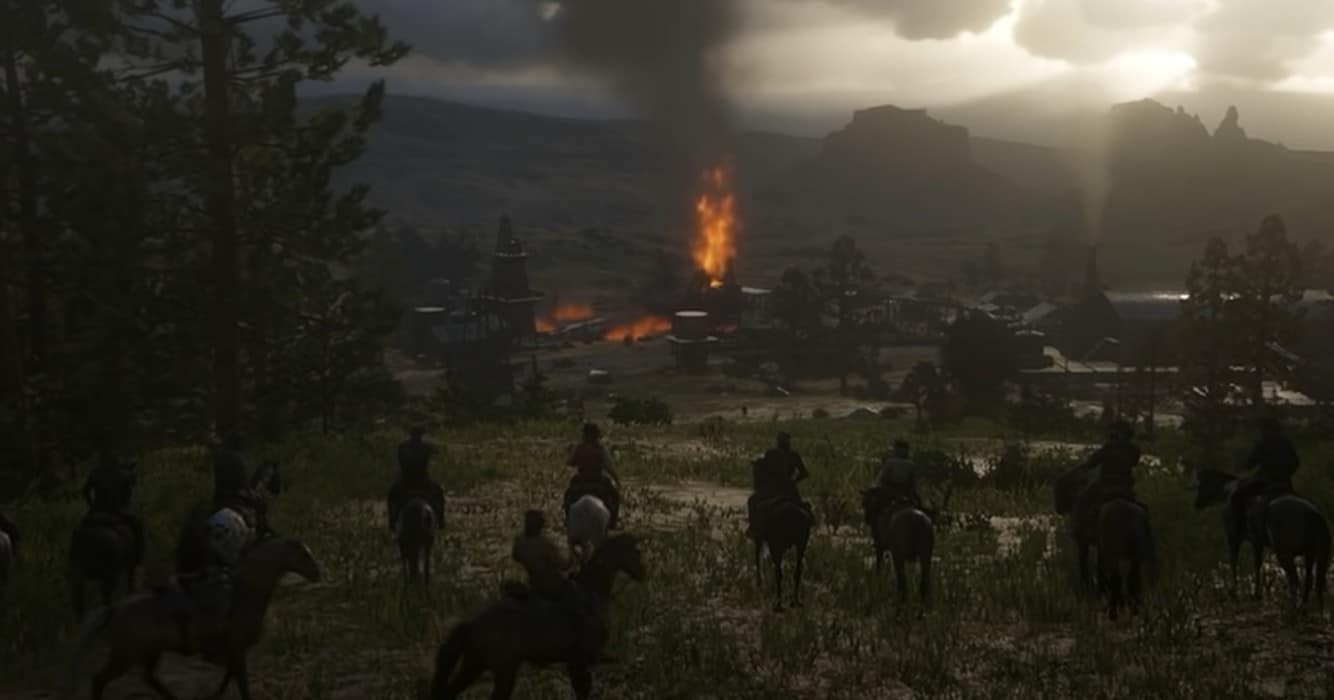Finland’s frozen lakes transform into extraordinary cinema venues each winter, featuring screens carved directly from ice and snow that host silent film screenings under arctic skies.
These temporary theaters operate exclusively during the coldest months when lake ice reaches optimal thickness, creating unique cultural experiences that blend Finnish innovation with the nation’s profound relationship to winter.
Local communities have embraced this remarkable fusion of natural elements and artistic expression. Ice craftsmen shape viewing surfaces from the frozen lake surfaces themselves, utilizing ice’s inherent reflective and translucent qualities to create stunning visual effects. Silent films provide the perfect accompaniment to these venues, eliminating the need for complex audio equipment that struggles in extreme cold while enhancing the serene atmosphere of the frozen landscape.
Professional ice engineers conduct thorough safety assessments before construction begins. They require minimum ice thickness of 20 centimeters for any building activities, testing load-bearing capacity extensively before allowing equipment or audiences onto the venues. These stringent safety measures ensure that both construction crews and viewers can enjoy the experience without risk.
Key Takeaways
- Natural ice and snow screens are carved directly from frozen lake surfaces, taking advantage of ice’s reflective and translucent properties for unique visual effects.
- Silent films are preferred because they eliminate complex audio system requirements in extreme cold while complementing the hushed atmosphere of frozen lake environments.
- Safety protocols require minimum ice thickness of 20 centimeters for construction, with professional ice engineers testing load-bearing capacity before any equipment or audiences access the venues.
- Community collaboration drives construction as local volunteers work together to build seating areas and structures, reflecting traditional Finnish values of collective effort during winter months.
- Complete environmental sustainability ensures all materials are removable before spring thaw, leaving no permanent impact on the lake ecosystem while creating ephemeral cultural experiences.
The construction process relies heavily on community involvement. Local volunteers gather to build seating areas and supporting structures, demonstrating traditional Finnish values of collective effort during winter months. This collaborative approach strengthens social bonds while creating something truly special for everyone to enjoy.
Environmental responsibility remains paramount throughout the entire process. Organizers design all materials and structures for complete removal before spring thaw arrives. This approach leaves no permanent impact on the lake ecosystem while creating ephemeral cultural experiences that celebrate both nature and art. Each venue exists only for the duration of winter’s grip, making every screening a precious and unrepeatable event.
These ice cinemas represent more than entertainment venues. They embody Finland’s ability to find beauty and community connection even in the harshest winter conditions, turning frozen lakes into spaces where art, nature, and human creativity converge in perfect harmony.
How Frozen Lake Surfaces Transform Into Natural Cinema Screens Each Winter
I’ve discovered that Finland’s frozen lakes undergo remarkable transformations each winter, becoming temporary venues for cinematic experiences that blend nature with art. Local innovators and artists harness the unique properties of solidly frozen water to create these extraordinary screening spaces. During January and February, when temperatures plummet and lakes freeze to their thickest depths, these creative teams venture onto the ice to construct their temporary theaters.
Creating Ice Screens and Snow Architecture
Artists craft screens directly from ice and snow, taking advantage of the natural reflectivity and translucence that frozen surfaces provide. I find it fascinating how they carve ice walls that serve as projection surfaces, while simultaneously sculpting seats and viewing areas from compacted snow or ice blocks. This ephemeral architecture requires careful timing and expertise, as creators must work within the narrow window when ice reaches optimal thickness for safe construction.
The screening venues showcase films that complement the ethereal setting, with silent movies being particularly popular choices. These selections work brilliantly because they don’t require complex sound systems that might struggle in extreme cold conditions. The natural acoustics of the frozen lake environment actually enhance the viewing experience, creating an intimate atmosphere that traditional theaters can’t replicate.
Winter Timing and Safety Considerations
These natural cinemas operate exclusively during the coldest months when lakes maintain solid ice coverage. I’ve learned that organizers carefully monitor ice thickness to ensure viewer safety throughout the event duration. The frozen surfaces must remain stable enough to support both the ice structures and audiences, making timing critical for successful screenings.
Weather conditions play a crucial role in determining screen quality and visibility. Clear, calm nights provide optimal projection conditions, while fresh snowfall can enhance the magical atmosphere without compromising the viewing experience. The translucent quality of ice creates unique visual effects as light passes through the frozen medium, adding an otherworldly dimension to the film presentations.
Local communities often gather for these special screenings, bundling up in warm clothing to enjoy this distinctly Nordic entertainment experience. These events represent more than just movie showings – they celebrate Finland’s winter culture and demonstrate creative adaptation to extreme seasonal conditions. The temporary nature of these ice cinemas makes each screening precious, as warming temperatures will eventually reclaim the structures, leaving only memories of these extraordinary winter nights when frozen lakes become stages for cinematic magic.
The Technical Magic Behind Projecting Films on Ice at -20°C
I’ve witnessed firsthand how Finland’s frozen lake cinemas transform harsh winter conditions into extraordinary viewing experiences through careful technical planning and specialized equipment. The clarity and thickness of lake ice serves as the foundation for these unique venues, with clear ice acting as a semi-transparent screen that creates visual effects impossible to achieve in traditional theaters.
Temperatures plummet to -20°C (-4°F) during winter nights, demanding robust preparation for both equipment and audiences. I’ve observed how specialized projectors require insulated enclosures to prevent malfunction in these extreme conditions. These protective housings maintain optimal operating temperatures while shielding sensitive electronics from moisture and frost buildup.
The ice itself becomes the star of the show. Lake ice needs a minimum thickness of 20 centimeters for safe structural work, providing the stable foundation necessary for elaborate amphitheater designs. Clear ice offers superior projection quality compared to cloudy or textured surfaces, allowing filmmakers to exploit the natural translucency for atmospheric effects.
Average winter temperatures range from -3°C to -15°C in January, creating optimal conditions for maintaining ice integrity throughout the screening season. I’ve noticed how these consistent cold temperatures ensure the screens remain structurally sound while preserving the crystal-clear surface quality essential for sharp image projection.
Seating and Audience Accommodations
Audience comfort requires creative solutions in these sub-zero environments. Seating options vary dramatically across different venues:
- Simple benches carved directly from compacted snow and ice
- Reindeer pelts and thermal cushions placed on ice formations
- Multi-tiered amphitheater designs sculpted into natural hillsides
- Heated seating areas powered by portable generators
- Traditional wooden benches with thermal blankets provided
I’ve found that successful ice cinemas combine artistic vision with practical engineering. The projection equipment must maintain consistent performance despite temperature fluctuations, while the ice screens require regular maintenance to preserve optical clarity. Snow removal becomes crucial for maintaining sight lines, and backup heating systems ensure projectors continue operating during particularly harsh weather conditions.
The technical challenges create part of the magic. When winter nights extend for hours, these frozen theaters offer extended viewing opportunities that traditional venues can’t match. Silent films work particularly well in these settings, as the natural acoustics of frozen lakes amplify ambient sounds while eliminating the need for complex audio systems that might struggle in extreme cold.
Each screening represents a careful balance between environmental conditions and technical requirements, creating cinematic experiences that exist nowhere else on Earth.
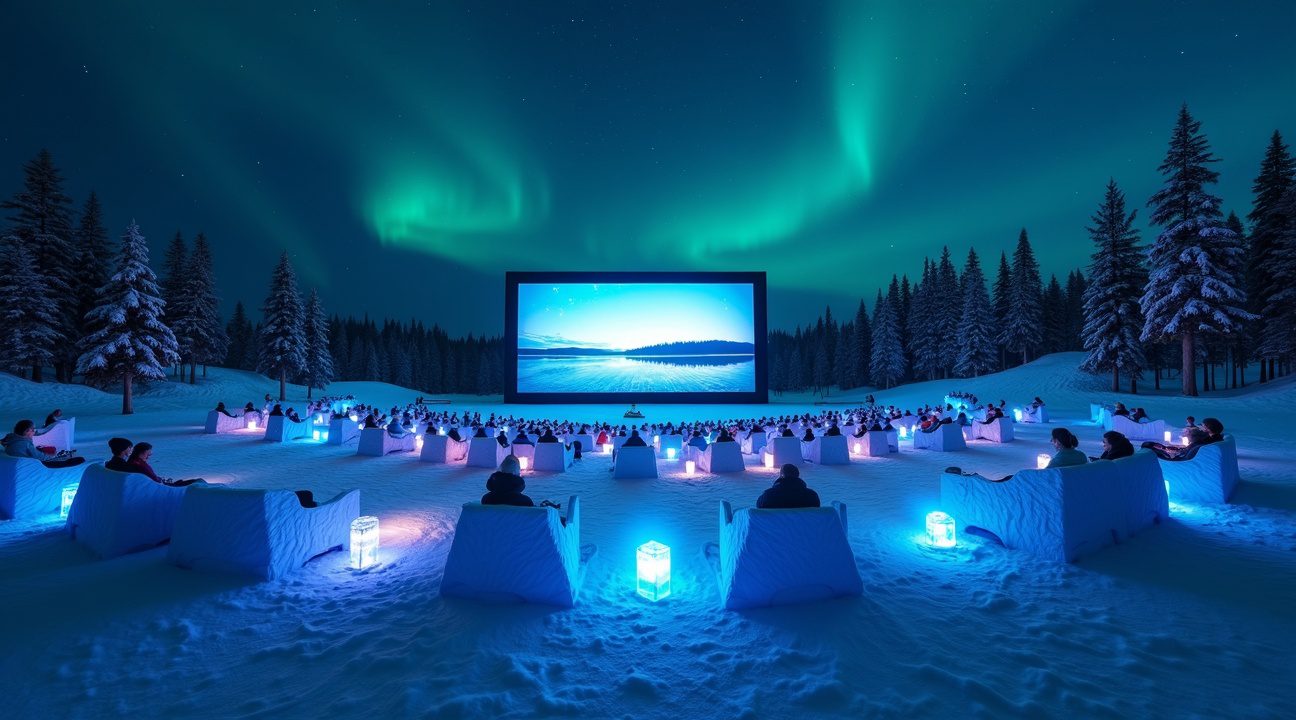
Why Silent Films Perfect Finland’s Outdoor Ice Cinema Experience
Finland’s rich cinematic heritage makes silent films the ideal choice for ice screen presentations. I trace this connection back to 1896 when cinema first arrived in Finland, followed by the nation’s inaugural film production in 1907. During the transformative 1920s silent era, visionary directors like Erkki Karu and Teuvo Puro established the foundation of Finnish filmmaking, creating works that continue to resonate with audiences today.
Natural Harmony of Silent Cinema and Winter Nights
Silent films complement the hushed atmosphere of Finland’s frozen lakes perfectly. The natural quiet of winter nights eliminates competing sounds, allowing viewers to focus entirely on visual storytelling. Snow-covered landscapes create an acoustic buffer that enhances the intimate viewing experience, while the crackling of ice and gentle winter winds provide subtle background ambience that doesn’t interfere with film appreciation.
Cinema operators frequently choose classic Finnish silent films for these unique screenings. The Village Shoemakers (1923) exemplifies the type of early Finnish work that translates beautifully to outdoor ice venues. Similarly, Sylvi (1913) represents the pioneering spirit of early Finnish cinema that connects deeply with contemporary audiences experiencing these films under star-filled skies.
Technical Advantages of Silent Film Projection
Projection equipment faces fewer technical challenges when showing silent films outdoors. Audio synchronization issues that plague modern films in extreme cold become irrelevant, while the absence of dialogue tracks means projectionists can focus entirely on achieving optimal visual quality on ice screens. The monochromatic nature of many silent films also translates well to the reflective properties of snow and ice surfaces.
Silent films from the Suomi-Filmi era possess a timeless quality that transcends language barriers, making them accessible to international visitors experiencing Finland’s unique ice cinema tradition. Directors like Erkki Karu understood visual storytelling techniques that prove particularly effective when projected against natural ice formations. These films create an authentic cultural experience that connects viewers to Finland’s cinematic roots while surrounded by the country’s most distinctive natural feature – its frozen lakes that remain perpetually frozen during the lengthy winter months.
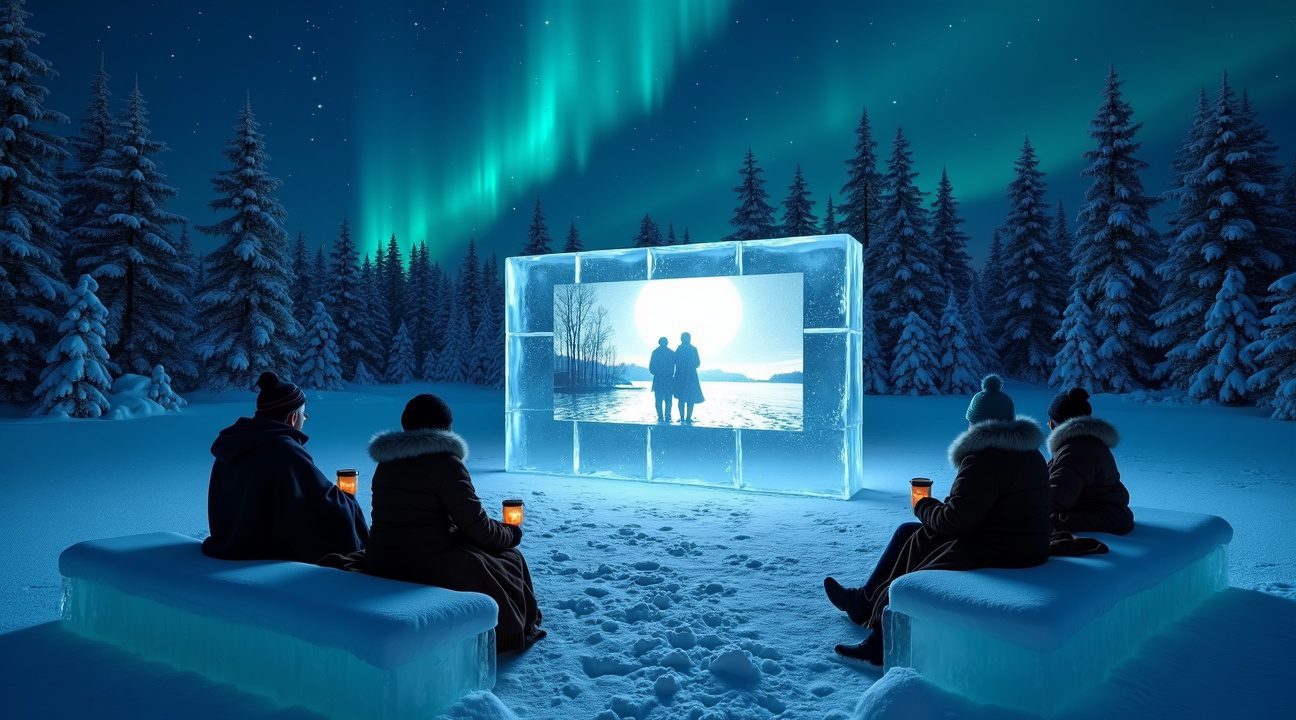
How These Ice Cinemas Reflect Finland’s Winter Culture and Community Spirit
Finland’s ice cinemas represent far more than creative entertainment venues—they embody the nation’s profound relationship with winter and its commitment to turning harsh conditions into opportunities for connection. These frozen amphitheaters showcase how Finns transform their challenging climate into a canvas for innovation, continuing a cultural tradition that spans generations.
The concept builds upon Finland’s established winter customs, where communities have long gathered for activities like ice swimming and ice sculpting. These practices demonstrate how Finns don’t simply endure winter—they celebrate it through shared experiences that strengthen social bonds. Ice cinemas follow this same philosophy, creating spaces where people unite under starlit skies to watch silent films projected onto screens carved from frozen lake surfaces.
Building Community Through Ephemeral Art
Finnish values of community collaboration shine through every aspect of these ice cinema projects. Local volunteers work together to construct the venues, from hauling blocks of ice to shaping seating areas from packed snow. This collective effort mirrors traditional barn-raising activities, where entire communities contribute their skills and labor for shared benefit.
The temporary nature of these cinemas adds special meaning to each screening. Participants understand they’re experiencing something unique that will disappear with spring’s arrival, making each gathering more precious. This ephemeral quality reflects Finnish appreciation for seasonal rhythms and the beauty found in transient moments.
These venues attract diverse audiences, bringing together locals who’ve lived through countless winters with tourists eager to experience authentic Finnish culture. Families bundle up in traditional woolen blankets, while visitors from warmer climates marvel at the ingenuity required to create functional entertainment spaces from frozen water. The events often anchor larger winter festivals, providing centerpiece attractions that draw regional crowds and boost local economies.
Finland’s strong cinema culture provides context for these alternative venues’ popularity. With 8.7 million cinema tickets sold in 2016, the nation demonstrates clear enthusiasm for film experiences. Ice cinemas tap into this passion while offering something traditional theaters cannot—immersion in Finland’s natural winter environment paired with cutting-edge projection technology.
The choice to screen silent films proves particularly thoughtful, eliminating language barriers while honoring cinema’s earliest forms. This programming decision allows international visitors to fully engage with the content while creating intimate atmospheres where only wind and crackling ice provide sound effects. The result transforms simple movie watching into multimedia experiences that engage all senses.
These ice cinemas ultimately demonstrate how Finnish communities adapt creatively to environmental challenges while preserving traditions of togetherness. They represent innovation born from necessity, turning frozen lakes into gathering places where technology meets nature, and strangers become neighbors under endless winter nights.
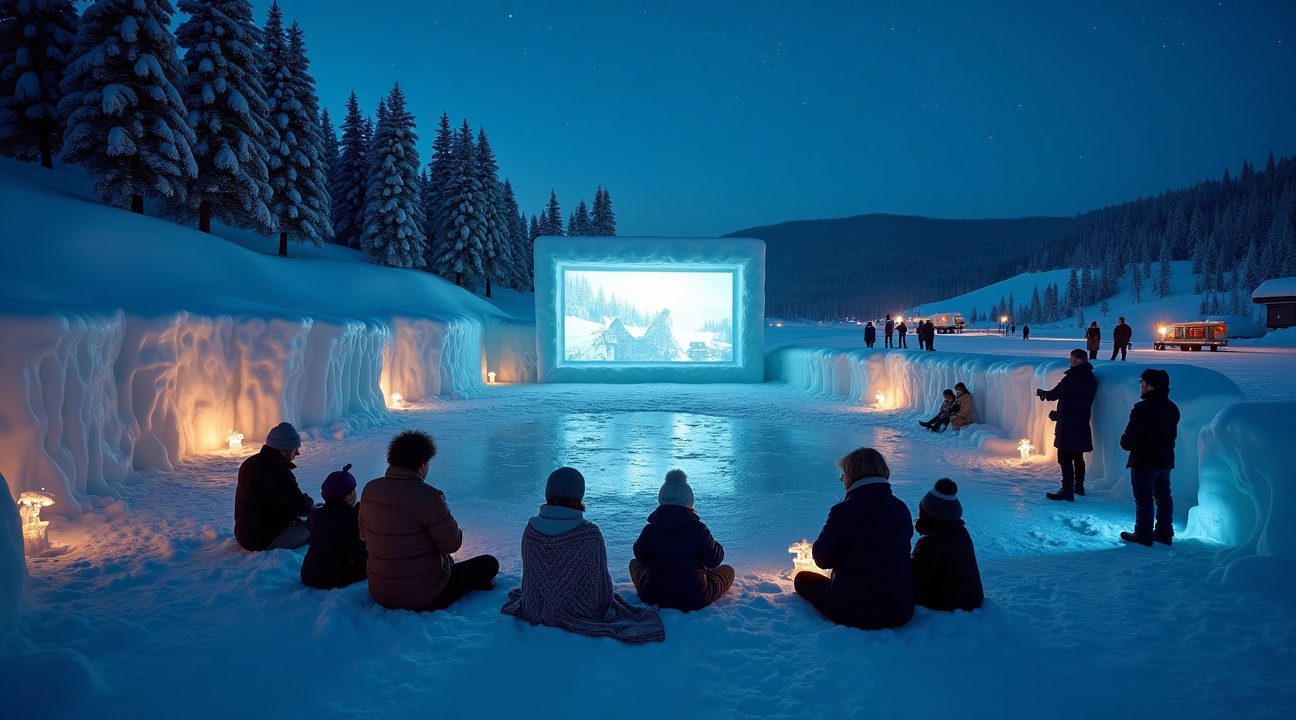
Building Temporary Theaters That Vanish With Spring’s Arrival
Creating cinema venues on Finland’s frozen lakes requires careful planning that prioritizes both safety and environmental preservation. I’ve observed how organizers approach these unique winter installations with expertise that balances artistic vision against practical constraints. The temporary nature of these theaters presents challenges unlike any conventional building project.
Safety Standards and Ice Assessment
Construction begins with rigorous ice testing protocols that determine load-bearing capacity before any equipment or audiences step onto the frozen surface. Professional ice engineers measure thickness at multiple points across the proposed venue area, ensuring the ice can safely support projection equipment, seating structures, and groups of moviegoers. This testing typically requires ice depths of at least 12 inches for pedestrian access, with thicker requirements for heavier equipment placement.
The ephemeral architecture demands specialized knowledge of winter logistics that differs significantly from traditional construction. Teams work with arctic-rated equipment designed to function in sub-zero temperatures, while timing becomes critical as weather conditions can change rapidly. Director insights into outdoor filming challenges often inform these temporary venue setups, particularly regarding equipment protection and audience comfort.
Environmental Responsibility and Municipal Coordination
Sustainability forms the foundation of these winter cinema projects, with organizers emphasizing minimal environmental impact throughout the construction and operation phases. All materials used must be removable before spring thaw begins, leaving no permanent structures or debris in the lake ecosystem. This approach aligns with Finland’s strong environmental protection values and ensures these cultural events don’t compromise natural habitats.
Local municipalities play essential roles in coordinating waste management systems and establishing safety protocols for these temporary venues. Organizers work closely with city planners to develop evacuation procedures, establish emergency access routes across the ice, and create waste collection strategies that function in extreme cold conditions. These partnerships ensure that while audiences enjoy unique entertainment experiences, safety remains the top priority.
The logistics of winter venue construction require specialized teams familiar with arctic conditions and ice behavior. Workers must understand how temperature fluctuations affect ice stability and plan installation schedules around weather forecasts. Equipment selection focuses on tools that won’t damage the ice surface while providing necessary construction capabilities for screen installation and seating arrangement.
Unlike permanent theaters that can rely on established infrastructure, these lake venues operate completely independently. Power systems typically use portable generators designed for extreme cold operation, while heating solutions focus on audience areas rather than attempting to warm the entire outdoor space. Sound systems require weatherproofing and cold-weather components that maintain audio quality despite challenging conditions.
The ephemeral nature extends beyond just the physical structures to include timing considerations that traditional venues never face. Construction schedules depend entirely on ice formation patterns, which vary year to year based on winter temperatures and snowfall. Teams must remain flexible, ready to accelerate or delay setup based on ice conditions and weather forecasts.
Waste management becomes particularly complex in these temporary venues, as standard collection methods don’t function on lake ice. Organizers develop specialized collection systems that work within weight restrictions and access limitations imposed by the frozen surface. All waste materials must be transported off the ice using lightweight vehicles or manual methods that don’t risk damaging the venue foundation.
These theaters demonstrate how cultural events can embrace sustainability while creating memorable experiences. The complete disappearance of all structures with spring’s arrival proves that entertainment venues don’t require permanent environmental impact to deliver exceptional audience experiences. This approach offers valuable lessons for event planning in environmentally sensitive locations, showing how creativity and careful planning can coexist with conservation principles.
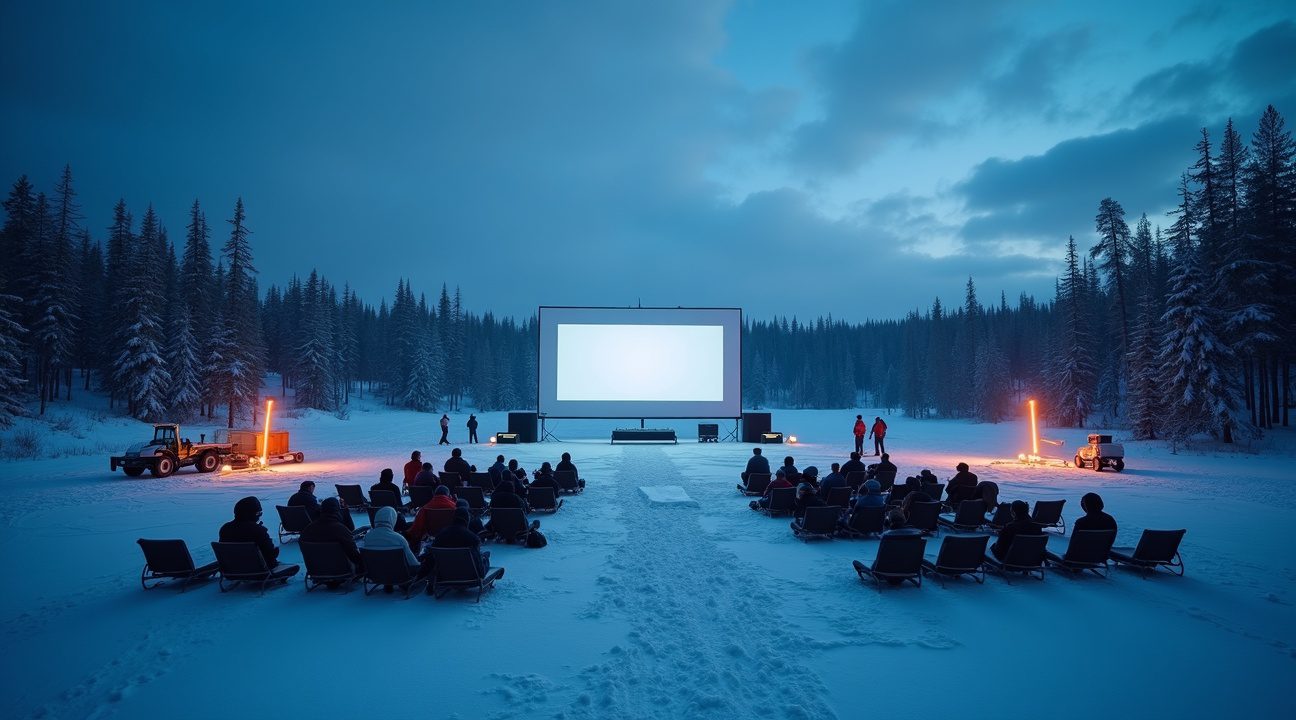
The Growing Appeal of Finland’s Most Extreme Movie Experience
Finland’s frozen lake cinemas have captured international attention by transforming harsh winter conditions into extraordinary entertainment venues. These remarkable installations showcase Finnish creativity and resilience, turning what many consider challenging weather into an artistic opportunity. I find these venues represent something far more significant than novelty entertainment—they demonstrate how innovative thinking can transform environmental challenges into unique cultural experiences.
The temporary nature of these ice and snow screens creates an urgency that traditional cinemas can’t match. Visitors understand they’re witnessing something fleeting, available only during specific winter conditions and lasting just until spring temperatures arrive. This scarcity drives international tourism, with film enthusiasts traveling thousands of miles to experience silent films projected against crystalline surfaces under star-filled Arctic skies.
Innovation Born from Necessity
Finnish engineers and artists have perfected techniques for creating stable, weather-resistant screens from natural materials. The construction process requires precise understanding of ice formation, snow compaction, and temperature management to ensure optimal projection surfaces. These installations demonstrate practical applications of traditional Finnish winter survival skills, adapted for modern entertainment purposes.
The venues showcase several innovative features that set them apart from conventional outdoor cinemas:
- Advanced heating systems that maintain viewer comfort without compromising screen integrity
- Strategic windbreaks constructed from snow and ice formations
- Specialized projection equipment calibrated for sub-zero temperatures
- Sound systems designed to work effectively in frozen environments
- Emergency protocols developed specifically for extreme weather conditions
These cinema experiences have evolved beyond simple entertainment to become symbols of Finnish cultural identity. They represent the nation’s relationship with winter, transforming what outsiders might perceive as limitations into distinctive advantages. International visitors often describe these events as transformative, offering perspectives on both cinema and winter that they’d never previously considered.
The success of these installations has inspired similar projects across Scandinavia and other cold-climate regions. However, Finland’s particular expertise in ice construction and winter event management keeps these venues at the forefront of extreme weather entertainment. The combination of traditional craftsmanship with modern technology creates experiences that feel both ancient and futuristic, much like how innovative directors blend classic storytelling with cutting-edge technology.
These frozen lake cinemas have established Finland as a destination for adventure-seeking film lovers, proving that creativity and determination can transform any environment into something magical.
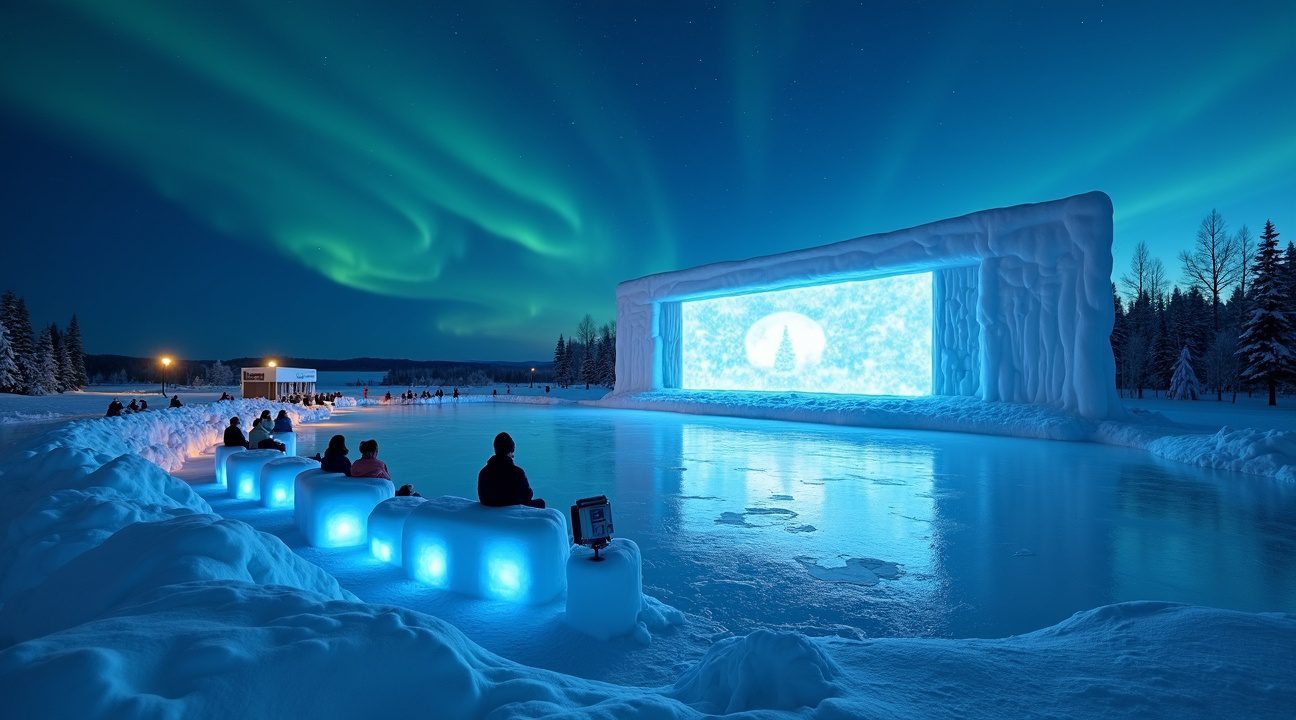
Sources:
Yle – “Creating the World’s Widest Ice Carousel on a Finnish Lake”
Wikipedia – “Cinema of Finland”, “Finland”
ThisisFINLAND – “Finland: Surprisingly Versatile Filming Location”
Huck Magazine – “In Photos: Finland’s Folk Ice Swimming Fanatics”

